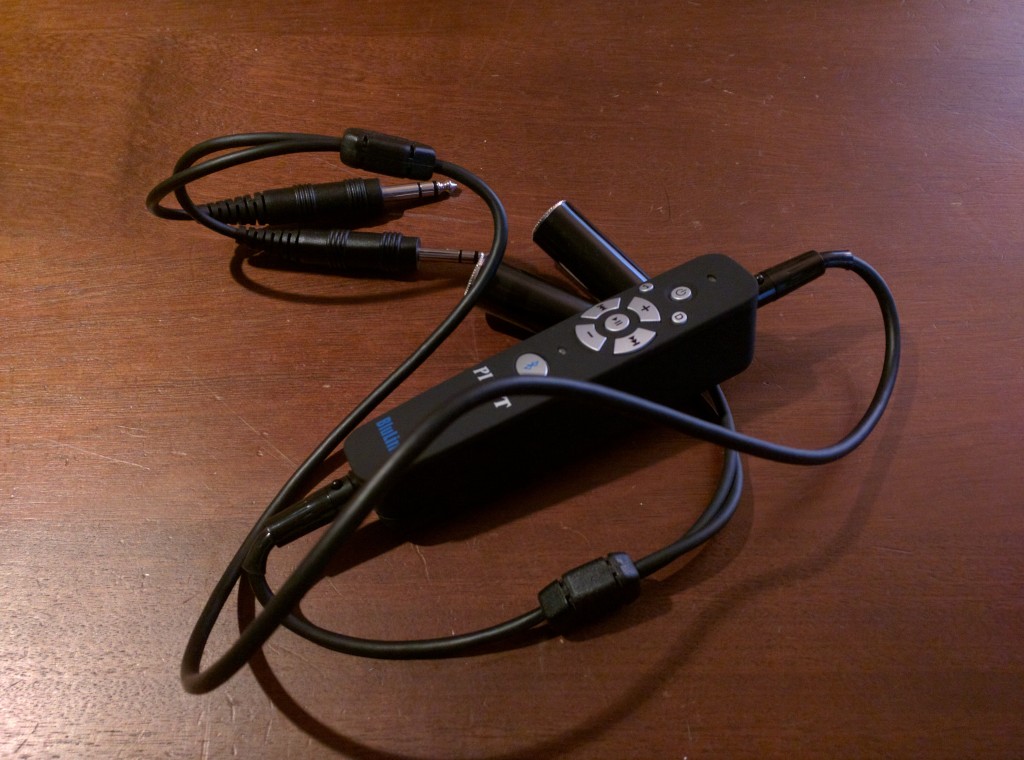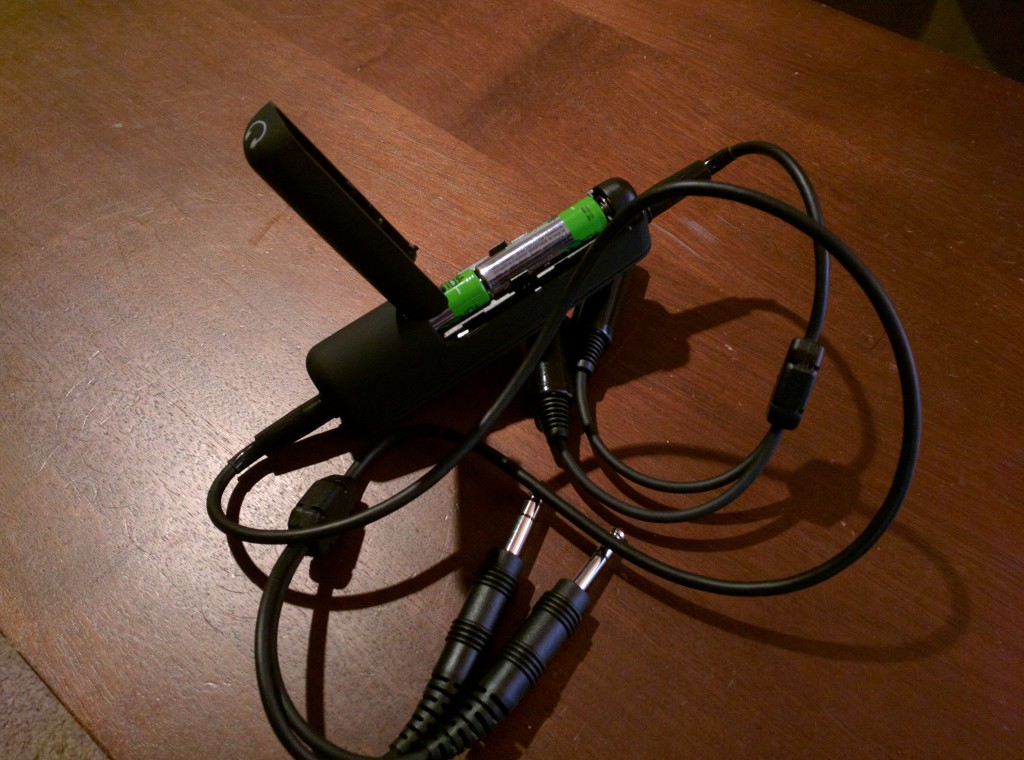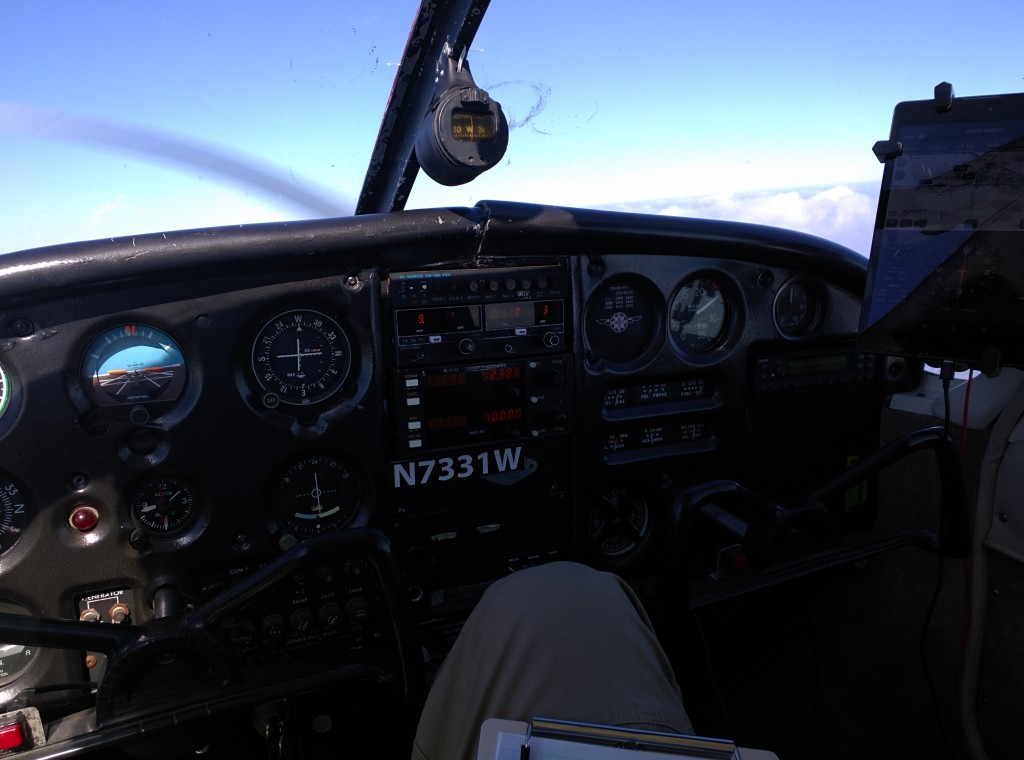Technology has moved on a little bit since my Cherokee was manufactured in 1963. Looking through the logbooks I can see that the avionics have changed over time — an ADF removed here, a new CDI replaced there — but modern technology is moving faster than ever, and getting a panel mounted solution for the latest tech might not be the best idea given the expense of installation and uncertainty of how long it will be in vogue. One innovation that has remarkably improved my driving experience on the ground is the ability to link my cell phone to my car’s stereo for making phone calls and listening to music. To duplicate that in the airplane I could either get a panel mounted solution with Bluetooth for $1,500 plus labor, or for a mere $249 I could get an inline adapter that could do all the same functions called the BluLink Adapter.
The concept for the BluLink Adapter is that it’s an in-line solution. The adapter plugs into your headset jacks on the panel, and then you plug your headset into the adapter. The adapter then mixes the comm audio with whatever you’re doing via Bluetooth and passes it to the headsets.
This version is the General Aviation version of the adapter with the common two-plug setup. While the adapter does also have a helicopter version, the central body is the exact same for both units — only the plugs change. This leads to an interesting side effect: you can use the adapter to plug a two-plug GA headset into a helicopter using the right combination of plugs. For cheap bastards like myself that might be forth the investment right there.
The unit comes with everything you see here. The construction on the device is about what you’d expect — a tiny bit south of solid on the look and feel of the plastic bits, but overall it feels solid. The connector plugs feature a generous level of rubber molding to keep the wires from splitting after long hours of use, and the unit fits perfectly in your hand for one-handed operation.
While that unit may look a bit large, in reality the majority of the space is taken up by two AA batteries. The adapter claims a battery life of 100 hours standby time and 15 to 20 hours flight time, but that really depends on the batteries you use. In order to save a little money and be a little greener I went with a rotating series of rechargeable AA batteries and I found that I was getting about 12 to 15 hours of use. I would pop a fresh set in every morning, fly all day, and then by the time I got near my destination the BluLink would start beeping at me that the batteries were running out.
There are two use cases for the BluLink adapter: listening to music and making phone calls. Thankfully I just spent a few dozen hours in my Piper Cherokee flying from San Antonio, Texas to Provincetown, Massachusetts so I think I’ve sufficiently tested both and can report back.
Things can be a little busy when you’re just getting started on a long cross country flight or finally coming in for a landing, but all that time in between can get boring. Sitting in the airplane boring a hole through the sky can be lonely work and even the radio chatter can get a little sparse in some places. That’s where it really pays to have an entertainment system like the BluLink available.
After connecting your cell phone to the adapter via Bluetooth you can seamlessly stream music to your headset. There are controls on the face of the unit that allow you to change the volume, pause, fast forward, and rewind all without ever fishing your phone out of your pocket. But even in busy airspace you probably won’t ever need to pause the music — the unit detects when there’s some sound coming from the COM panel and instantly reduces the music volume to just a bare whisper so you can hear the more important ATC traffic better.
Audio quality is acceptable. Don’t expect to get every last ounce of auditory goodness out of your lossless recordings through the unit, but at the same time it’s good enough for government work. Especially if you’ve got a bunch of podcasts queued up then this will work just fine for your listening pleasure. That said, due to the way the thing is designed this is a one-man unit. You’ll be able to enjoy your tunes, but the rest of the people on your intercom won’t hear a single note.
While listening to music will make your flight seem quicker, there is another feature that might actually make it a bit safer. The BluLink not only plays music through your headset, but it can allow you to talk on your cell phone without needing to remove your headset as well.
The best example for when this might be helpful is when departing on an IFR flight plan from a non-towered field. If you’re VFR then everything is fine, but when you’re departing IFR you’re going to need to pick up your clearance before your wheels leave the ground. There are two ways to make this happen: either call the local approach controllers before you start your engine to get your clearance and then scramble to get everything started and airborne, or take one side of your headset off at the hold short line and try to communicate over the engine noise. Neither solution is perfect really, but with the BluLink you can simply talk to them through the headset as normal.
You may not need to call ATC very often in that sort of situation, but something you probably will need to do is call whoever is picking you up from the airport. I was coming into Westchester County Airport (KHPN) on an IFR flight plan and had just been cleared for the ILS approach one night. All the checklists were finished and I still had a while to go before touchdown, so I thought that this was the perfect time to give my parents a call to come pick me up. By the time I got everything tied down and squared away they would be at the airport and we could get going without much delay. I bashed a couple buttons on the cell phone and soon enough I heard the phone ringing through my headset. I got through to their voicemail over the final approach fix, and by the decision height I had finished my message all without missing a beat from ATC — you can talk to ATC and be on the cell phone at the same time.
Overall I’m very happy with the BluLink adapter. The one thing I’m not happy about: the price. There are tons of Bluetooth headsets on the market that have a similar functionality for a mere $30. What BluLink has done is integrate that into an inline adapter for the General Aviation headset, and while that definitely deserves some added compensation I think $250 is just a little high. Then again, I paid full price and would happily do so again for the added features in my 1963 Piper.
BluLink Bluetooth Adapter
Battery Life: 15-20 hours
MSRP: $249
Available: AMAZON (Link)
Overall (out of five): * * * *
A little expensive, but given how well it works I’m definitely okay with paying full sticker price on these. I’d love to see what a little competition can do to the price and feature set, but as-is they’re definitely worth the money.




